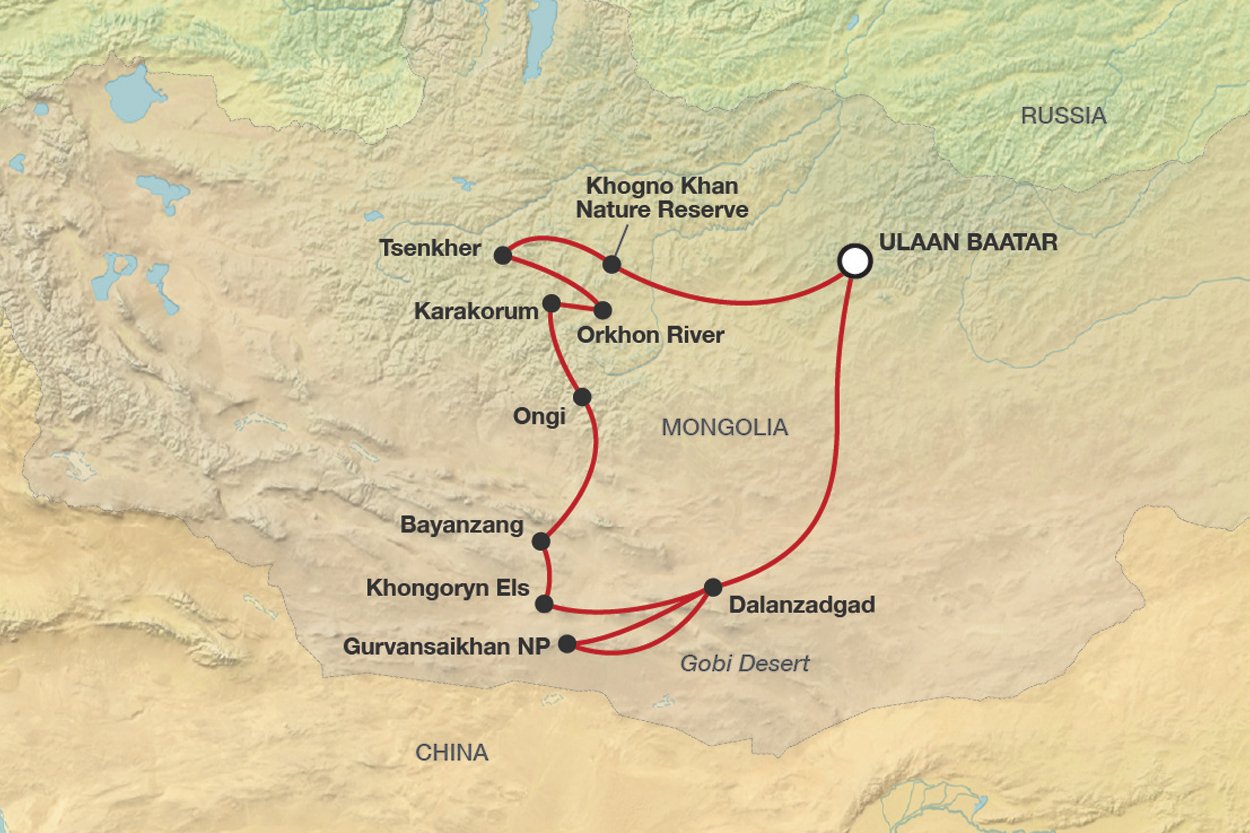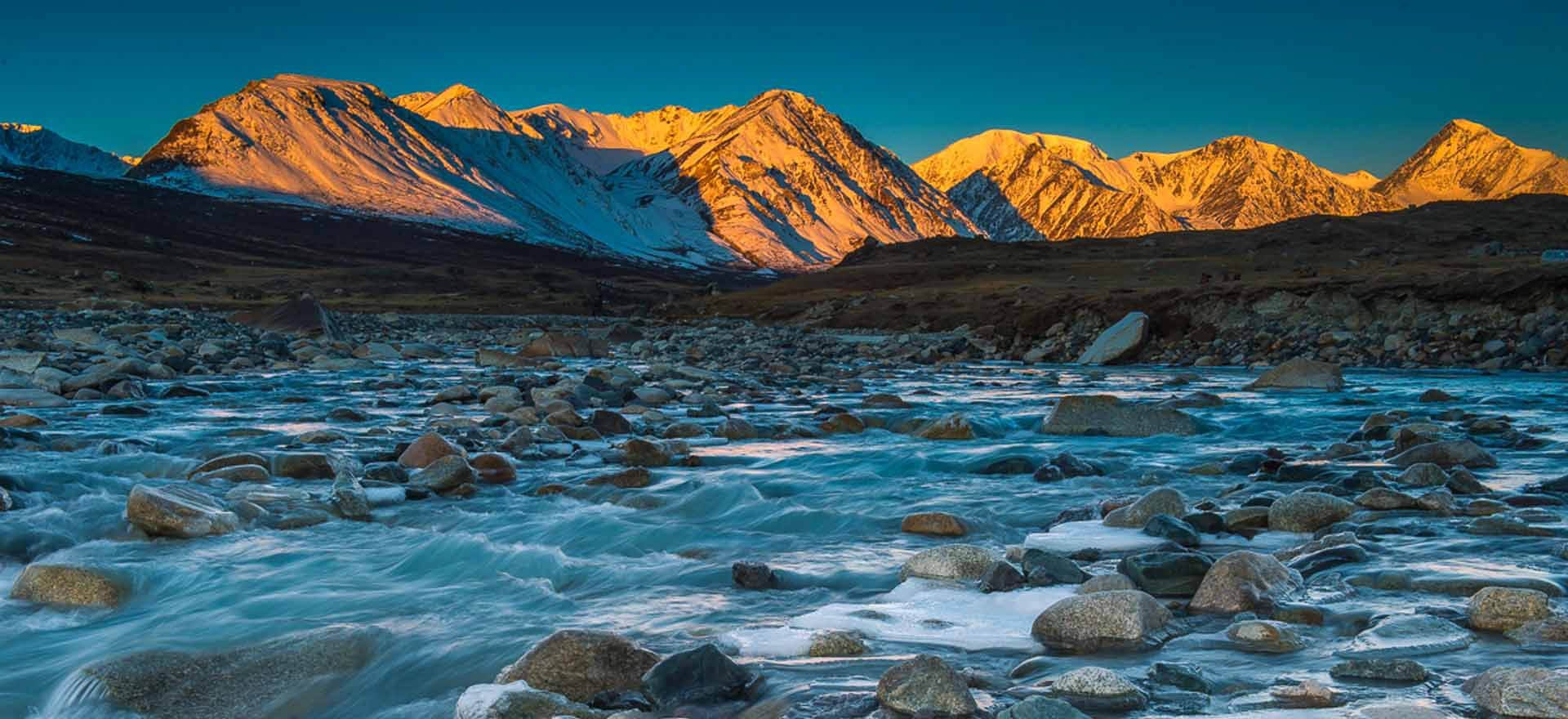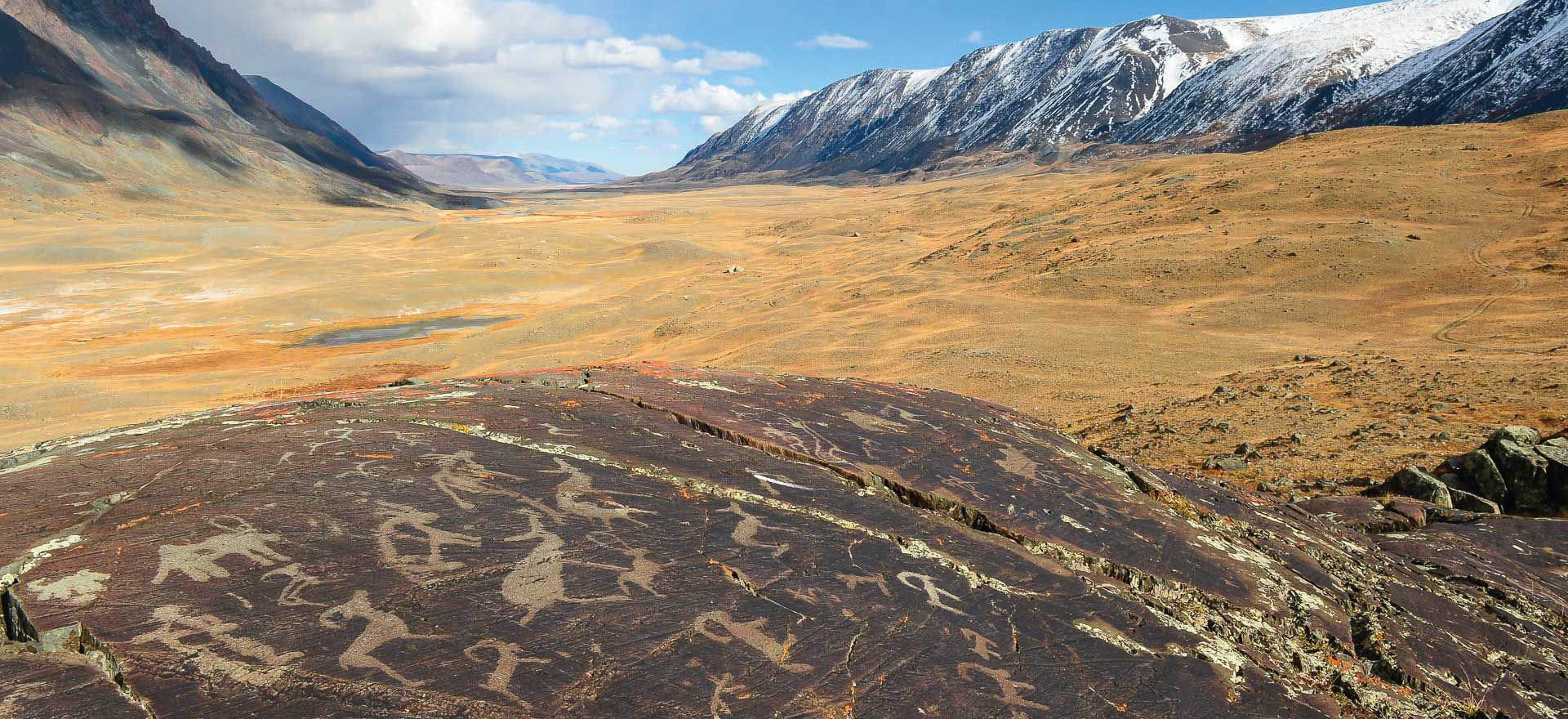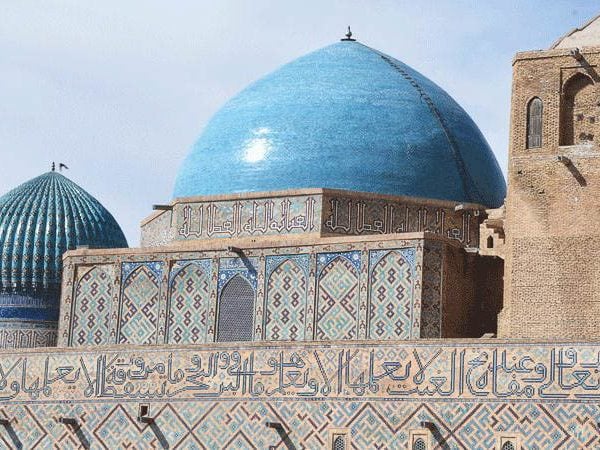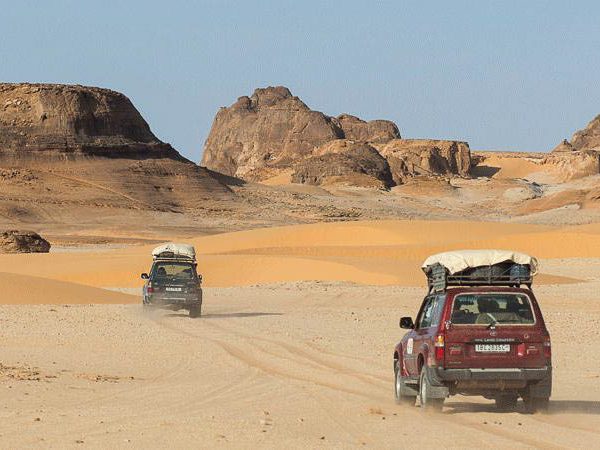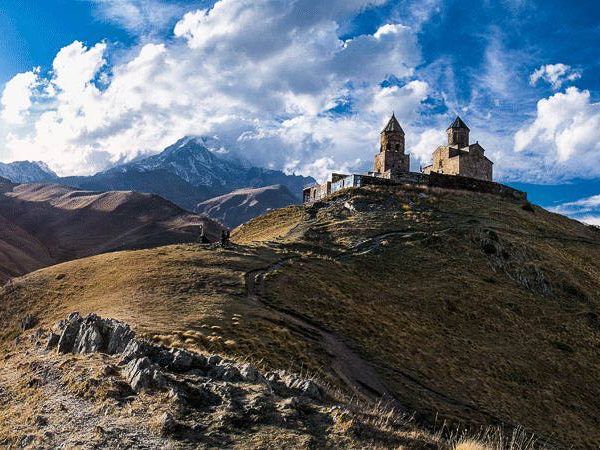Day 2 - Ulaanbaatar
Today we explore the city with visits to the Gandan Monastery, the largest and most important in Mongolia, and the Chinggis Khan Museum, which gives a great insight into Mongol history and the life and conquests of Chinggis Khan. In the evening we enjoy a traditional music and dance performance by the Tumen Ekh Ensemble. Overnight Hotel Nine or similar. (BLD)
Day 3 - Gobi Desert
Heading into the Gobi Desert, we reach Baga Gazriin. The site comprises an area of extensive granite rock formations and dry riverbeds dotted with elm trees, surrounded by steppe habitat. We spend time exploring the area, including the sacred ruined monastery, destroyed during the religious purges of the 1930s. Overnight ger camp. (BLD)
Day 4 - Dalanzadgad
Depart for the provincial capital of Mandalgobi where we stop at the Gobi Oasis Tree planting Project – a family-run conservation project that was established in 1975. We then continue south across the desert plains to the town of Dalanzadgad. Overnight Khan Uul Hotel or similar. (BL)
Day 5 - Gurvansaikhan National Park - Dalanzadgad
In the morning we visit the Gobi Museum of Nature and History before continuing to Yolyn Am, the ‘vulture’s gorge’, where we explore on foot and by vehicle. Yolyn Am is located within the Gurvansaikhan National Park, a haven for the Gobi’s wildlife and home to snow leopard, bear, wolf, ibex and bearded vultures, among other species. Return to Dalanzadgad for the night. Overnight Khan Uul Hotel or similar. (BL)
Day 6 - Khongoryn Els
Drive to Khongoryn Els, an area of huge sand dunes that cover nearly a thousand square kilometres. The dunes are known for the noise that they make when struck by wind – and also called ‘the singing dunes’. We arrive in the afternoon and have some time to explore this majestic landscape, and hopefully meet semi-nomadic camel herding families that live here. Overnight basic but private, family-operated ger camp. (BLD)
Day 7 - Bayanzag
Today we head to the ‘flaming cliffs’ of Bayanzag, so named for their red sandstone. This is one of the richest areas in Mongolia for dinosaur fossils and was made famous by the palaeontologist Roy Chapman. Overnight basic, family-operated ger camp. (BLD)
Day 8 - Ongi
Drive from the central heartlands of Mongolia to the edge of the Gobi Desert, to Ongi. Here we explore the ruined monastery, destroyed during the purges of the 1930s and a poignant reminder of Mongolia’s political past. Overnight basic, family-operated ger camp. (BLD)
Days 9-11 - Karakorum – Erdene Zuu – Orkhon River Valley
A full day’s drive (day 9) to Karakorum, the former capital of the Mongols in the 13thcentury. Nearby is the monastery of Erdene Zuu, with its Tibetan style temples and Buddhist relics, which we visit on day 10. We also visit the excellent museum for an insight into the history of this region. On Day 11 we spend the day with a local family of herders. The Orkhon River Valley is a UNESCO World Heritage Site and is considered to be the cradle of Mongolian civilisation, as well as being rich in nomadic life. Overnight ger camp. (BLD)
Days 12-13 - Tsetserleg – Tsenkher
Today we drive to Tsetserleg which has a vibrant local market. The town is located on the northeastern slopes of the Khangai Mountains and dominated by Bulgan Uul Mountain. On day 12 we visit the Museum of Arkhangai Province, which is located in the three remaining courtyard temples of the former Zayain Khuree Monastery. The museum is worth a visit for its mix of Mongolian and Tibetan architecture and its exhibits on Buddhism and traditional Mongolian life. On day 13 we spend the day with a local family of Yak herders who live in the Khangai Mountains. Overnight Ashid Bekel Hotel or similar. (BL)
Day 14 - Khogno khan Nature Reserve
Our destination for today is the Khogno Khan Nature Reserve, where a sacred granite mountain sits within an area of secluded valleys, freshwater springs, open steppe and the Elsen Tasarkhai sand dunes. The small but vital Tarna River provides an essential water source for herders in the region. We explore the hidden interiors of the mountain on a three-four hour hike along a birch-bordered path to the small temple of Erdene Khambiin Khiid and the ruined Ovgon Khiid Monastery. This location offers one of the most beautiful panoramas of the region. Overnight basic, family-operated ger camp. (BLD)
Day 15 - Ulaan Baatar
A full day drive to Ulaanbaatar where you will spend your final night in Mongolia. Overnight Hotel Nine or similar. (BL)
Day 16 - Ulaan Baatar
Transfer to the airport for departure. (B)
What's included?
What's not included?
Visas
Citizens of the UK, US, Canada, Australia, New Zealand and many EU nationalities do not require a visa to enter Mongolia for up to 30 days. Visa regulations can change however and so we recommend that you contact your nearest embassy for the most up to date information. You can also check this online via the link below, and apply for an e-visa if needed.
You should ensure that your passport has at least six months’ validity after the end date of your trip. We also strongly recommend that your passport has a minimum of two blank pages next to each other – on rare occasion it may lead to problems with visas and immigration authorities if it does not.
If your flights involve a connection in Russia you must check with your airline whether you need a Russian visa. On the occasion travellers have been refused boarding for flights that connect in Russia, even if not entering Russia itself.
Health and vaccinations
We are not medically qualified and so we recommend that you speak to your doctor or nearest health professional for advice concerning recommended vaccinations. However, there are no compulsory vaccinations needed to enter either country. For more advice on vaccinations you can also visit https://travelhealthpro.org.uk/countries.
If you have any physical limitations that might impact your ability to participate in the planned tour activities, it’s essential that you make us aware as soon as possible so that we can discuss this with you.
Insurance
It is a condition of joining our tours that you have suitable travel insurance in place, and we cannot accept travellers without insurance. All policies differ in terms of what they will cover, but as a minimum you need medical and health cover which will cover you for the whole time that you are away. Most policies will also include cancellation cover, which will cover you if an unforeseen circumstance obliges you to cancel your trip. We recommend that you obtain your insurance as soon as you book your trip.
Please note that government travel warnings often affect the validity of your travel insurance, and you should check this with your insurance company.
Money
Mongolian togrog will be very difficult to obtain before you arrive. The best option is to bring US dollars for exchange purposes, and your tour leader will be able to assist you in exchanging them to local currency.
Credit cards will be almost useless outside of Ulaan Baatar.
You will not have much need for money on this trip as for much of the time you will be in remote areas with no opportunities to buy anything.
When to go
Traditionally the best time to visit Mongolia is from June to August – outside of this time it can be extremely cold. However western Mongolia does not experience the biting cold of more central regions – you can expect it to be below freezing at night but there is often a 20 degree difference between night and day temperatures. The winter months are a fascinating time to visit western Mongolia as this is when the eagle hunting season starts, offering superb opportunities to see this unique practice.
Local conditions
When travelling to some of the destinations we offer you need to bear in mind that things won’t always work here as we’re used to them working at home. Travelling in underdeveloped and untouristed destinations requires both patience and a sense of humour. There may be problems with infrastructure, attitudes may be different, and maintenance may not be as high a standard as we would always like, but this is very much part and parcel of travelling in such a place. We aim to resolve any issues as quickly as possible, and thank you for your patience.
This is particularly relevant to this trip – this is a remote region, some of which is largely isolated from the outside world and has very little experience of tourism whatsoever. We will be camping for some of the time, with no real facilities, and it is essential that you bear this in mind before joining this trip.
Travel advice
We keep a very close eye on the travel advice issued by the UK Foreign and Commonwealth Office so that we can keep you up to date with any warnings. At the time of writing the FCO does not advise against travel to any parts of Mongolia.
This relates to advice from the British government – other nationalities need to check the stance of their own governments.
Note that the information contained above is highly susceptible to change, and while we endeavour to keep up to date we recommend that you use this as a guide only. Should you have any questions, please don’t hesitate to contact us.
